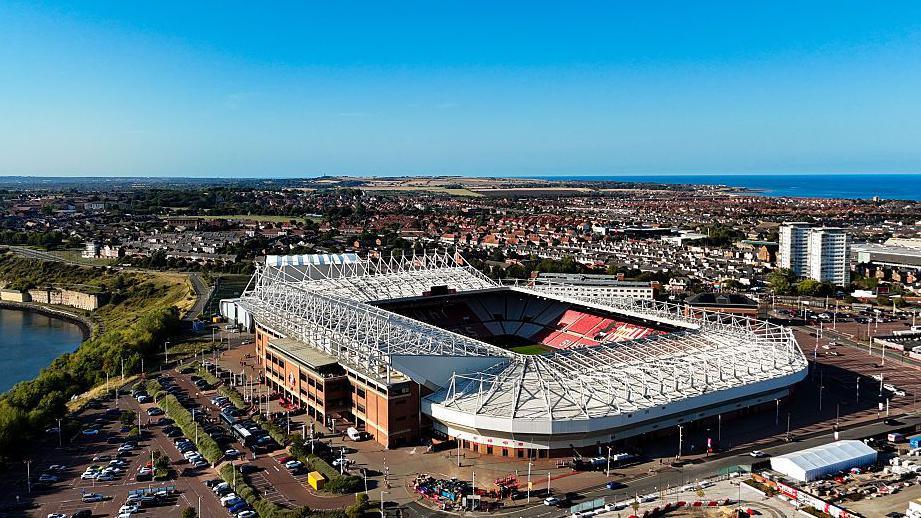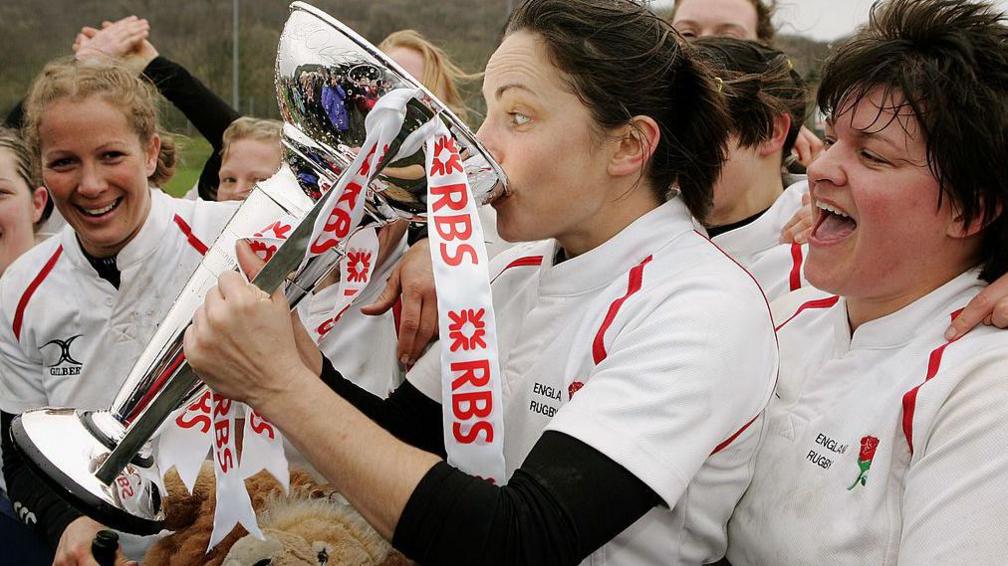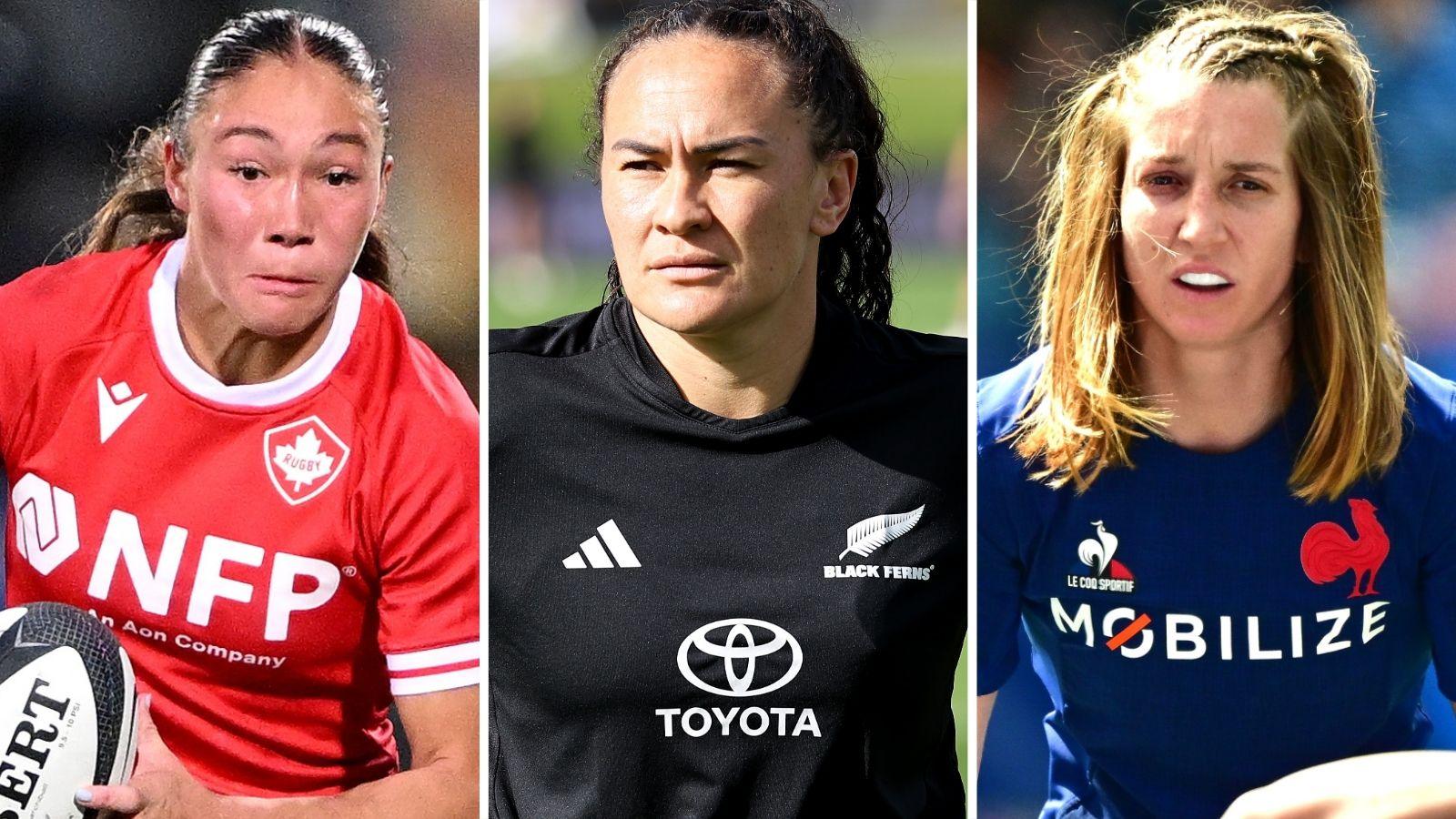Why Rugby World Cup 2025 will change game

More than 40,000 tickets have been sold for England's tournament opener against the United States at the Stadium of Light in Sunderland on Friday evening
- Published
Sue Day never won the Women's Rugby World Cup as a player.
She went to three – 1998, 2002 and 2006 – and was part of an England edged out in the final stages every time.
But, after swapping shorts for a suit, she did finally bring the World Cup home.
As chief operating officer, Day was part of a Rugby Football Union team who, in 2019, convinced World Rugby to award the 2025 Women's Rugby World Cup to England.
"Those of you who were there will remember Sue Day's famous address," Alex Teasdale, the RFU's executive director of women's rugby, said this week.
"She said: 'Stick with us. You are going to see something different. We will be able to fill that stadium. We will hear the national anthem sung an octave higher because it will attract a different demographic. We will deliver this tournament in a way that will push this game forward.'"
Women's Rugby World Cup
22 August - 27 September
Watch every game live on BBC iPlayer and the BBC Sport website and app, with coverage also on BBC TV, BBC Radio 5 Live and Sports Extra
The stadium in question was Twickenham. The prospect, at the time, seemed preposterous.
The biggest crowd England had attracted for a Women's Six Nations game at that point was 4,674 for a win over France in Doncaster in February 2019.
Even when the Red Roses had competed in a Women's Rugby World Cup final in Belfast two years before, just over 17,000 had turned up to watch them take on New Zealand.
Twickenham's capacity is 82,000.
To scale up to a stage that size? In a little more than six years?
It seemed like the sort of flimsy promise that routinely pads out bid documents.
And yet.
On Tuesday, the sellout signs went up for the 27 September showpiece. Demand is such that World Rugby believes it could have filled Allianz Stadium two or three times over.
Sport's administrators regularly point to grand plans, great leaps forward and graphs trending ever upwards. But this is transformation in a relative twinkle.
Ten of the matchday 23 who played in front of fewer than 5,000 in Doncaster – and were delighted by the turnout – are also in England's World Cup squad this time around.
Day, who was poached by the Football Association in April 2024, was right about the rest too.
This tournament is different to any Women's World Cup that has come before.
Last time around, in New Zealand, three venues hosted matches, offering up a total capacity of 180,000.
At England 2025, there are eight venues, with a total capacity of 470,000.
More than 375,000 of those tickets have been sold - three times the number shifted in New Zealand three years ago.
Gone are the days of teams sharing hotels and gyms.
Even with the tournament expanding to 16 teams from 12, each will have their own dedicated base, with 30 set up to accommodate them around the country.
For those travelling long-haul to England, there were business-class upgrades.
For those suffering in the unprecedented limelight, there are mental health support and protection from social media abuse.
There are five times more media accredited to follow the tournament. Bumper sales of tickets, hospitality and sponsorship opportunities have surpassed the tournament's commercial revenue targets before the first match.
But there is a difference in tone, as well as scale.
The anthems will be an octave higher.
Women's rugby's fanbase is younger and more female than that of the men's game. More of them attend matches as families.

Sue Day celebrates victory in the 2007 Six Nations
The women's game has tapped a seam of support previously unrealised.
That is partly because the players have hit a different pitch too.
Ilona Maher, the United States social media phenomenon, is the most-often cited example.
But she is one of many players keeping up a witty, human conversation with their followers and the world in general.
England wing Abby Dow and her star-struck Spanish opposite number Claudia Perez exchanging a crocheted keyring, a hand-drawn portrait and shirts, external after their match last month was an irresistible example.
"There is something quite special about the way women celebrate our sport," said Brett Robinson, the chair of World Rugby.
"It's unique. The personality and humility they bring is something that many of us men could learn from, in the professional game in particular."
Sally Horrox, World Rugby's director of women's rugby, who has previously worked in football and netball, agrees.
"I think the personality of female athletes, not just rugby players, can be quite different," she said.
"The way they approach the sport, with the joy, the energy, the excitement and the humour."
'We need our own TV show!' Red Roses lift lid on off-field fun
Horrox says England 2025 is a chance to consolidate a burgeoning game and propel women's rugby to new levels, before future World Cups in Australia in 2029 and the United States in 2033.
"The time is certainly now," she added. "The time is now for women's rugby, for women's sport. We are part of a broader, social and sporting movement and are proud to be so, but I think this event will re-engineer the future of rugby.
"It is hugely important that we make the most of this opportunity in front of us now over the next six weeks."
The hype might stick in the throat for some.
While hosts and favourites England are reaping the rewards of heavy investment in their women's programme, Scotland's preparations have been hampered by a contract dispute between their players and union.
Wales went through similar last summer, in the aftermath of a sexism scandal at the Welsh Rugby Union
Plenty of nations are on even slimmer finances and some lop-sided scorelines between professionals and amateurs are guaranteed.
There is still work to be done off the pitch.
While the proportion of women in the various coaching set-ups has doubled since the last Rugby World Cup, only three of the 16 nations are led by women.
One of those – France's Gaelle Mignot – is part of a co-head coach arrangement as well.
But, overall, the arc of the tournament's history bends towards a better place.
When England took part in their welcome ceremony in Sunderland last Saturday, they carried a little reminder of that fact.
Inside the lining of their jackets, at their backs, in small red text, was the name of every Red Rose that had gone before and endured a less equitable, lower-profile game.
Sue Day, Red Rose number 73, was among them.
Related topics
- Published21 August

- Published17 August

- Published20 August
